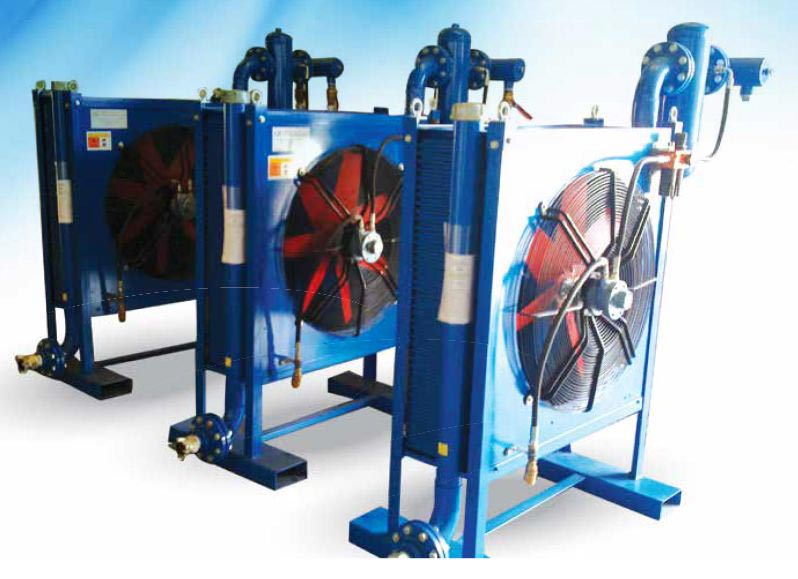Air Coolers
If you do not schedule a maintenance time, your chiller can arrange it for you, causing factory air loss. A dirty or aging intercooler will increase the air temperature and reduce the air density in the compression stage, resulting in a reduced efficiency range or rejection. Ultimately, this will reduce the airflow generated. In summer, high temperature and humidity will exacerbate this situation, further reducing the capacity of the air compressor.
These factors create a perfect environment for a surge. When the inlet flow is reduced to a level that is insufficient to overcome the compressor discharge pressure, a surge will occur. The compressor that has experienced voltage runs in an aerodynamically unstable state. Overpressure is a condition of air compressors. If it takes too long, it may damage the compressor components.
Oil cooler
Another important cooler that needs to be kept clean is the oil cooler. The oil cooler helps keep the air compressor oil at a constant temperature level of 115-125F. Higher temperatures above 140 °F can affect oil quality and cause paint film to appear. Any temperature below 115 °F will carry water and reduce the lubricity of the oil, leading to premature bearing failure and failure of other oil-lubricated components. Keeping the oil cooler clean helps to keep the oil temperature at the ideal level of 115-125F/C.
Hyper Cooler
Hyper coolers can be used when there is no cooling water, thereby limiting the factory Cost and complexity, and the air that can be prepared for high-temperature chillers can be installed directly after the compressor or blower, which can remove up to 80% of the condensate, thereby protecting the entire compressed air system or production process. The compressed air system works efficiently to ensure the quality of the finished product.
Water-cooled aftercooler for compressed air cooling
During the audit, it was determined that the temperature of the air discharged from several of its compressors was 130 °F, and the compressed air dryer that received the air was designed to withstand only 100 °F. Water contaminated its compressed air system. Because the performance and durability of the dryer were threatened, they decided to contact the experts of General Air Products to find a cooling solution in the form of a water-cooled aftercooler.
How to use an aftercooler to cool the compressed air
The water-cooled aftercooler proven here includes a shell and tube warmness exchanger, a separator, and a drain valve. It’s miles designed to chill the compressor air to a stage where the dryer can perform correctly.
If you have a closed-loop water system in your facility, a water-cooled aftercooler is an excellent cooling solution. The water-cooled aftercooler does not require electricity or maintenance, does not add hot air to the operating environment, and allows you to spend less on the aftercooler itself
How does the waterless air cooler work?
Direct evaporation is used in residential and industrial conversion chillers and is described as a metal or plastic inner box with ventilated sides. The centrifugal fan or blower drives the air, and the water pump wets the evaporative cooling pad. The cooling device can be installed on the roof, exterior wall or window of the building. The fan draws in nearby air through the ventilation holes and wet pads on the side of the device to keep it cool. The heat in the air evaporates the moisture on the board, and the board is constantly re-moistened to maintain the cooling process.
How does the water cooler work?
Sweating has the same effect: water particles on the skin& surface take away heat as they evaporate, cooling the skin. As we all know, compared with air cooled aftercooler, these air coolers can reduce energy consumption by 75%. There are many styles of evaporative coolers. In some methods, a fine mist is sprayed into the air and then blown out with a fan. Since the water in this mist is composed of fine water droplets, it is easy to evaporate and absorb heat from the air. In other methods, air is blown through the wetted material. For example, you can blow through a fine net or through wet sheets. This wet material then cools as it evaporates, which in turn cools the air.



